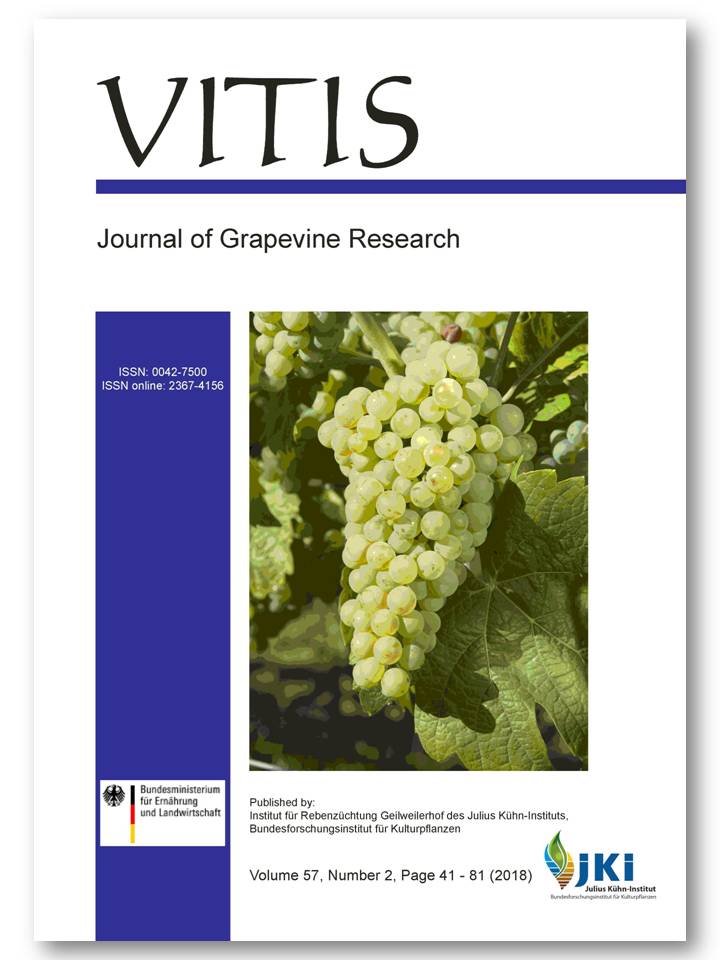Shikimic acid concentration in white wines produced with different processing protocols from fungus-resistant grapes growing in the Alps
DOI:
https://doi.org/10.5073/vitis.2018.57.41-46Keywords:
fungus-resistant grapes; 'Müller Thurgau'; shikimate; winemaking technique; 'Yellow Muscat'.Abstract
Shikimic acid (SHA) has been used for years as variety marker in fraud control, especially for 'Pinot Noir', 'Pinot Gris' and 'Pinot Blanc' with very low amounts. Until now no data for the hybrid grapes 'Bronner', 'Helios', 'Johanniter', 'Muscaris', 'Solaris' and 'Souvignier Gris' from the Viticultural Institute of Freiburg (Germany) were published. These white varieties with resistance against downy and powdery mildew are increasingly planted in some Alpine Italian regions. Data obtained from white wines of different vintages and vineyards in Trentino by HPLC showed that 'Johanniter' had the highest average content of SHA, while 'Solaris' and 'Muscaris' had much lower levels. These data are compared with previously published data for Italian wines of 19 white varieties and new data for 'Müller-Thurgau' and 'Yellow Muscat' wines.
For a subset of 10 grape batches the influence of four different winemaking protocols on the amount of SHA was investigated. Increasing levels were found in the expected order from direct pressing to pressing of crushed-destemmed grapes (+28 %), short maceration of crushed-destemmed grapes before pressing (+37 %) and a 7-day skin-contact fermentation (+107 %).
Downloads
Published
Issue
Section
License
The content of VITIS is published under a Creative Commons Attribution 4.0 license. Any user is free to share and adapt (remix, transform, build upon) the content as long as the original publication is attributed (authors, title, year, journal, issue, pages) and any changes to the original are clearly labeled. We do not prohibit or charge a fee for reuse of published content. The use of general descriptive names, trade names, trademarks, and so forth in any publication herein, even if not specifically indicated, does not imply that these names are not protected by the relevant laws and regulations. The submitting author agrees to these terms on behalf of all co-authors when submitting a manuscript. Please be aware that this license cannot be revoked. All authors retain the copyright on their work and are able to enter into separate, additional contractual arrangements.



